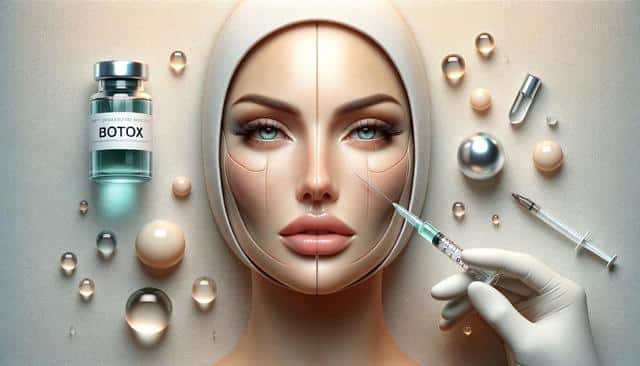
Understanding Botox: Uses, Benefits, and Considerations
What is Botox and How Does It Work?
Botox is a purified protein derived from the bacterium Clostridium botulinum. When used in small, controlled doses, it temporarily blocks nerve signals to specific muscles, causing them to relax. This effect is particularly useful in both cosmetic and medical applications. In aesthetic treatments, Botox is primarily used to reduce the appearance of fine lines and wrinkles, especially those caused by repetitive muscle movements such as frowning or squinting. On the medical side, it can offer relief for conditions such as chronic migraines, excessive sweating, and muscle spasms.
The science behind Botox lies in its ability to inhibit the release of acetylcholine, a neurotransmitter that signals muscle contraction. By preventing this signal, the targeted muscles remain relaxed for several months. This mechanism is what makes Botox both versatile and effective in a range of treatments.
Common Cosmetic Applications of Botox
Cosmetic use of Botox is one of its most popular applications. It is often used to smooth dynamic wrinkles, which are lines that form from repeated facial expressions. These include:
- Forehead lines
- Glabellar lines (between the eyebrows)
- Crow’s feet (around the eyes)
Beyond wrinkle reduction, Botox is also used in other cosmetic procedures such as eyebrow lifting and jawline contouring. When administered correctly, it delivers subtle enhancements that can contribute to a more refreshed appearance without altering natural facial expressions. The treatment process is typically quick, often completed within 10 to 20 minutes, and requires minimal downtime, making it convenient for those with busy schedules.
It’s important to note that results are temporary, usually lasting between three to six months depending on the area treated and individual factors such as metabolism and lifestyle.
Therapeutic Uses Beyond Aesthetics
While Botox is often associated with cosmetic improvements, it also serves a vital role in medical treatments. Health professionals use it to manage various conditions, offering relief where other methods may fall short. Some well-known therapeutic uses include:
- Chronic migraines: Botox can reduce the frequency and severity of migraines when injected into specific head and neck muscles.
- Hyperhidrosis: This condition, characterized by excessive sweating, can be managed by injecting Botox into sweat glands to reduce activity.
- Muscle stiffness and spasms: Patients with neurological conditions such as cerebral palsy or multiple sclerosis may benefit from Botox to alleviate involuntary muscle movements.
Botox in these contexts is typically administered by specialists and involves a different dosing and frequency schedule than cosmetic use. These medical applications have been approved by regulatory authorities in many countries, highlighting the substance’s broad potential.
What to Expect During and After Treatment
Undergoing Botox treatment generally involves a straightforward process. It typically begins with a consultation to assess your goals and determine if the procedure is suitable. During the session, small injections are made using a fine needle, targeting specific muscles. The level of discomfort is usually minimal, and most people describe it as a brief pinching sensation.
After the procedure, patients can usually return to their normal activities right away. However, there are a few aftercare guidelines to follow:
- Avoid rubbing or massaging the treated area for at least 24 hours
- Refrain from strenuous activity for the rest of the day
- Stay upright for a few hours post-treatment to prevent the substance from migrating
Side effects are typically mild and temporary, including slight bruising, swelling, or redness at the injection site. In rare cases, patients may experience headaches or drooping eyelids, but these effects usually resolve within a few days or weeks.
Choosing a Qualified Provider and Making Informed Decisions
One of the most important aspects of receiving Botox treatment is selecting a qualified and experienced provider. Whether the goal is aesthetic enhancement or medical relief, working with a trained professional ensures safety and optimal results. Look for practitioners with proper certifications and a track record of positive outcomes.
Before proceeding, patients should have a detailed consultation that includes discussing medical history, expectations, and potential risks. Transparent communication helps tailor the treatment to individual needs and prevents misunderstandings about outcomes. Botox is not a one-size-fits-all solution, and personalized care is essential for achieving satisfactory results.
Additionally, it’s crucial to have realistic expectations. While Botox can provide noticeable improvements, it is not a permanent fix, and maintenance treatments will be required to sustain results. Understanding the scope and limitations of Botox can contribute to a more satisfying and informed experience.